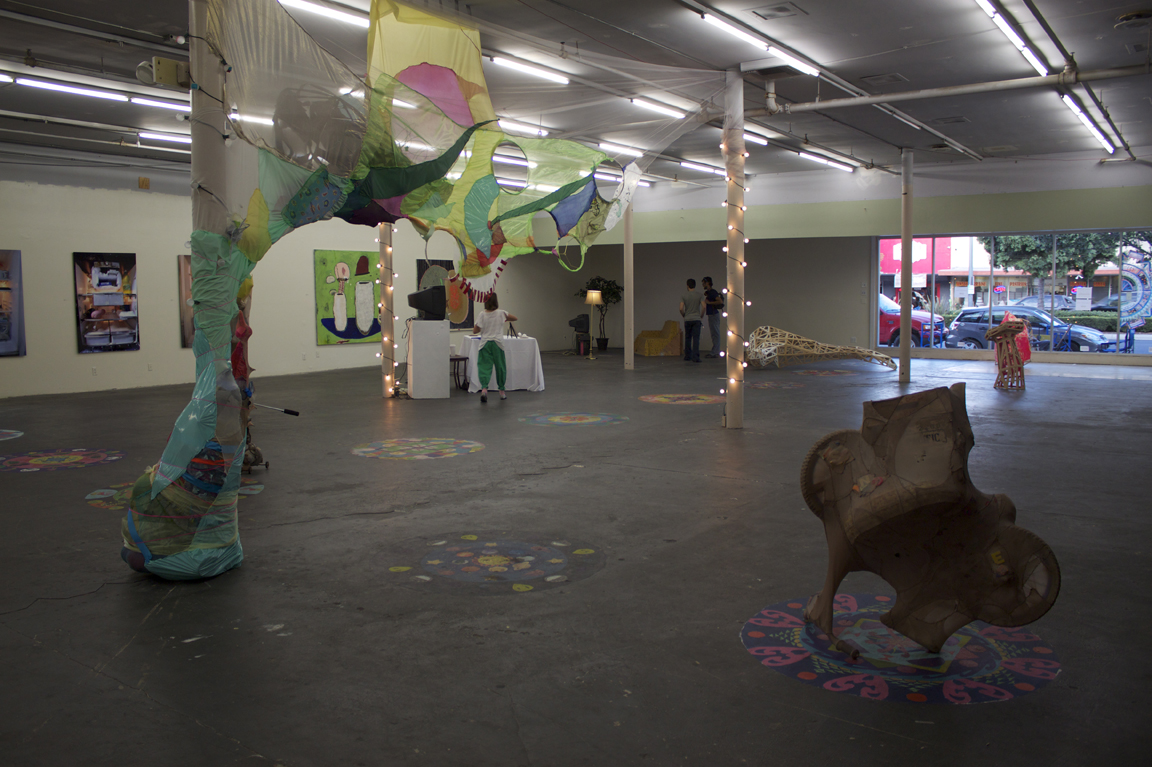
22 Oct It is Happening—NOW
Tracy C. Teran
A recent exhibition at the Expo Arts Center by emerging artists in the South Bay questions our relationship with time and the slippery definition of the immediate present. Curator Hilary Norcliffe established four types of Now’s to organize the diverse works in a variety of media. However, the exhibition’s strength is the ability of the works to operate between these categories.
The first category Norcliffe identified includes documentary-type work, evidence or records of a past event. Jocelyn Foye’s five painted, polyurethane resin molds poignantly define this category and arguably bridge others. As art objects they can be admired for their tactile, patterned appearance, but behind their industrial exterior they pose a serious conceptual argument about the function of art. Bi-products of a past action, demure as walking, such as in Shred Boy RD (though Foye has organized sporting events and other types) they question the location and function of art. Moreover, Foye’s tongue and cheek formal-industrial statement urges the audience to look for aesthetic tantalization and humor in the everyday.
The second type of work responds to either real-world concerns or experience. The hyper-real, digital inkjet prints from the series, Controlled Humidity by Cynthia Herrera elucidate this category. Herrera mines the politicized nature of the refrigerator in Cuba. The restriction of personal freedom is expressed in her fridge-sized photographs of the containment unit, isolating the food, crumbs, and liquid pools of goo in sublime fashion. Herrera notes that this space not only stores necessary foodstuff, but also often conceals forbidden products, such as red meat. Rather than just deliver a one-sided critique of the Cuban political structure as oppressive, the “contraband” meat functions as a mark of personal liberation and a form of agency that suggests the presence of other subversive actions.
The third category includes work that happened just prior to the opening. This particular category is malleable, since each work required installation in the space prior to the exhibition’s opening. Yet it was clear that some of the work like Nathan Huff’s installation, Shifting used the specific setting of the gallery and was dependent on its architecture. Disparate objects were combined including a painting of a suspended whale, a chair seemingly flung onto the gallery’s support pole and a ramp, among other objects. In turn, the fantastical scenario presented the hair-raising story in a comic strip-like organization of time. The combination of the painted scenario alongside its real counterpart creates an enigmatic scene, in the same vein as Robert Gober, where the viewer is left dangling in the free space of Huff’s imagination.
Another notable work, perhaps for its size and whimsy include the large, prehistorical, biomorphic structures by Noah Thomas. Made of plywood, and in the case of Rover, plywood, plaster and paint, the sculptures were placed on the gallery floor. Like prehistoric carcasses, due to the domineering size and splashes of bright pigment, they engage the viewer in a spatial, perception exercise.
Each of the works is in an immobile position, suspended in time for the sake of the show. The static state prompts the viewer to consider the binary opposite of “now,” decay, the eventuality of death and preservation. This distinction was made present in the geometric couch, Eraser Love Seat by Vav Vavrek. The list of materials is a dystopic testament: erasers, wood, time, and dimensions variable. By using the couch of thousands of stacked squares, spectators engaged in its deformation. But what in theory seems a depressing formal manifestation to the fragility and perhaps, diabolical side of free will, this work was revived by the group of children at the evening’s opening, as a huge Lego set. Kids delighted in play and whimsy, participating in indeed the best coping strategy for managing the grains of time.
The fourth category identified by Norcliffe, includes works organized to occur at the opening, or after the visitor left. On Friday, October 5 the evening of the opening, JEFF&GORDON inserted a dismissed aspect of the exhibition opening ritual into an interactive performance in Chefs d’Ouevre. Absorbing the usual task of the gallery assistant or event coordinator, the collaborative served the public the highest rated art opening refreshments (gathered by conducting a poll amongst their friends). According to Gordon Winiemko, the work “…takes an ubiquitous element of art openings and moves it to the center stage…in doing so it critiques the artist’s role of giving things away.” The video, Chefs d’Ouevre, accompanied the performance, (remaining there along with the serving tools after the pair left) and shows close ups of hands and sizzling bacon, utilizing the meticulous filming strategies employed in cooking shows. The video accompanied the seated duo as they chopped, trayed and served chocolate cake and milk, Brea cheese and pears among other delectable goodies.
This work could be read through a variety of lenses, in particular the demand by social-elites for parties and swag in exchange for the purchase of works. Yet, what rings more true to “now” is that this work resonates with the issues of labor and service in the arts. Donning ties and collared shirts, the duo’s service to the public, in the form of free food, critiques the fact that many creative people are forced into bargaining for their labor and performing a variety of roles to maintain their status as artists, writers and creative producers. Due to the slashing of the budget for the arts in this country and the far too popular mindset that equates art with leisure, the arts are being forced into the gold ghetto of private funding.
Despite Norcliffe’s taxonomy and our very human (or is it just American?) response to organize and label, the entire show is an attempt to add a level of self-reflexive interrogation into the concept of what it is “now.” Norcliffe’s series of circular linguistic proposals about in the curatorial statement are further evidence of her interest in the topic. The way that I have organized the works in this brief article are probably not what Norcliffe had in mind. Instead it is my own taxonomy and a reflection of my relationship with the individual works and my opinions on time. This I assert is NOW’s strength. Rather than divide time and its visual interpretations by these artists into chewable pieces in the gallery space, NOW allows the visitor to meditate on the categories and free associate.
NOW reveals our level of anxiety over the state of contemporaneity (this very topic was mined by Terry Smith, who attempted to use it as an organizing framework for contemporary art in What is Contemporary Art?). The amount of work about now represents our perpetual struggle to characterize the present, manage our past and set a course for the future. These contemporary artists raise this obsessive human impulse in a complex way that is worth seeing. NOW is part of Long Beach Arts Month. It at the Expo Art Center from October 5-27.
Tracy C. Teran is an independent scholar and arts professional based in Long Beach. Contact her at tracycteran@gmail.com.
All photographs by Breanne Lynn Patterson: breannepatterson.com.
- Remnants from Vav Vavrek’s, Eraser Love Seat (2012) erasers, wood, time
- Noah Thomas
- JEFF&GORDON, from the performance, Chefs d’Oeuvre (2012)
- Nathan Huff, Shifting (2012), mixed media installation, dimensions variable
- Cynthia Herrera, Controlled Humidity (Pastel) (2010) digital inkjet print, 60” x 40”
- Jocelyn Foye, Biff (2011) polyurethane resin, gold paint, 28.75” x 27.5



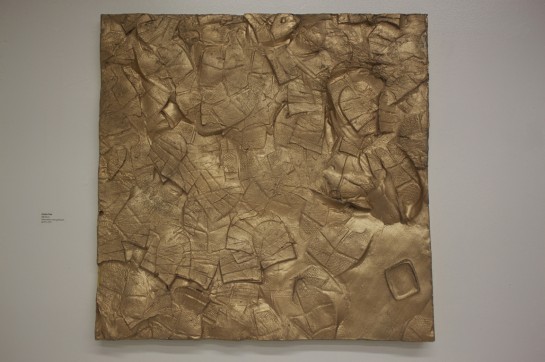
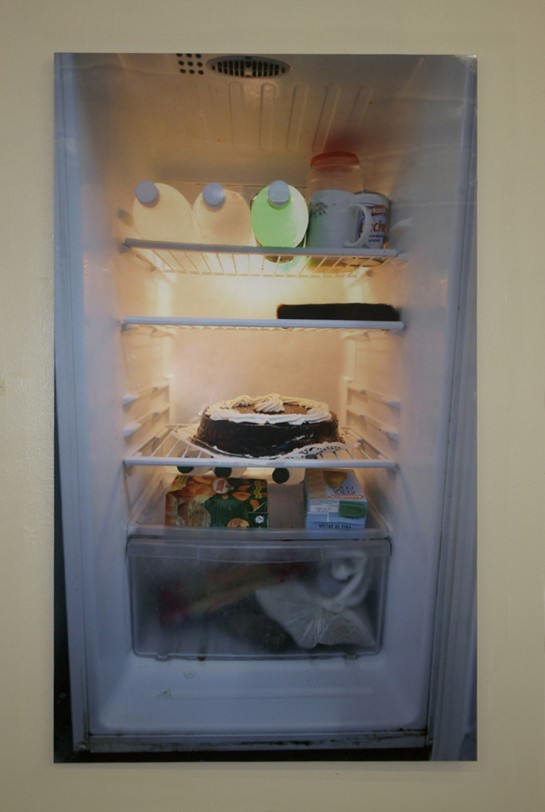
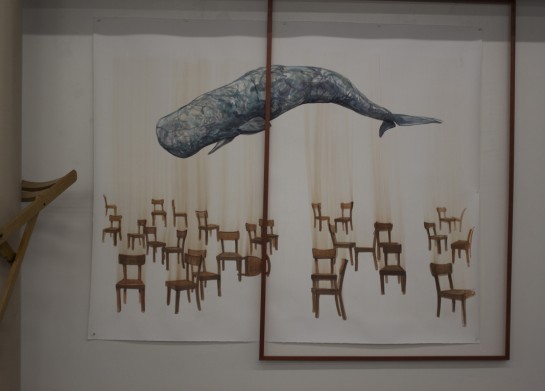
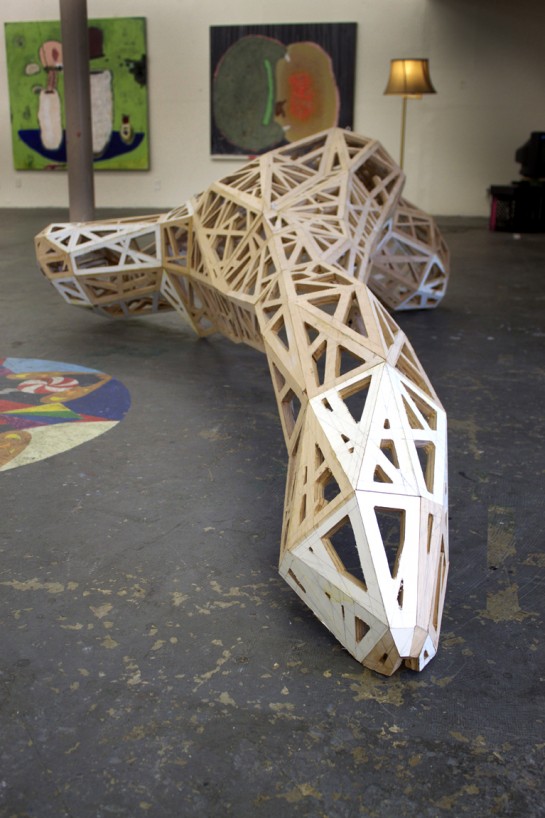
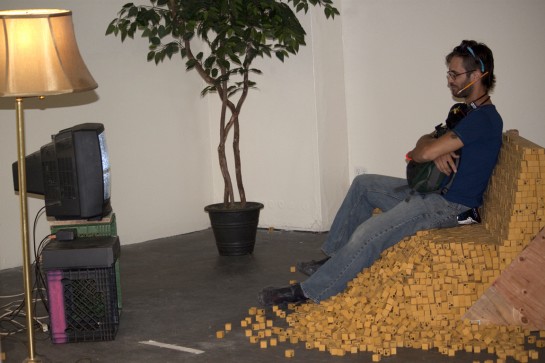
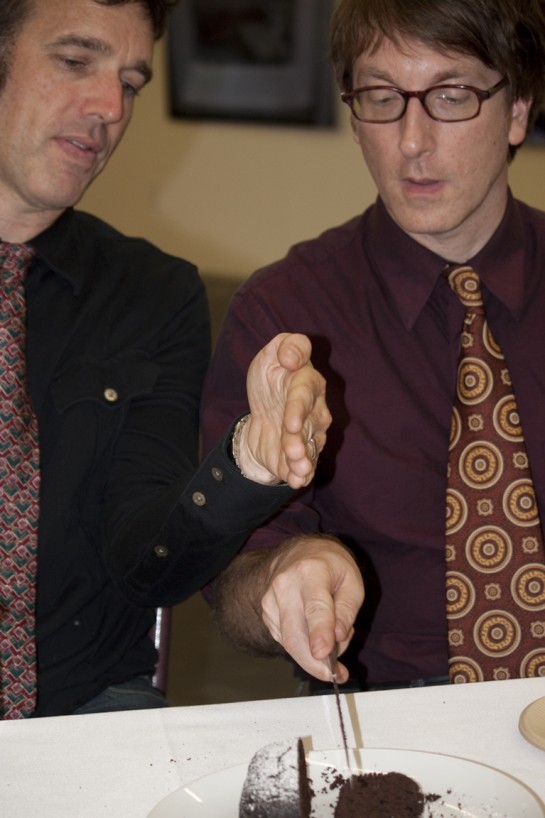
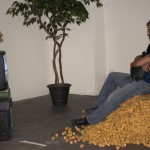
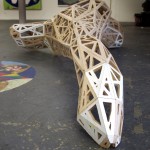

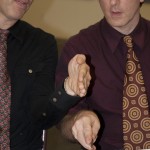
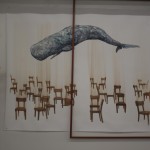

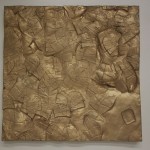
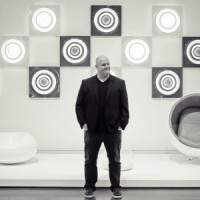
Sorry, the comment form is closed at this time.